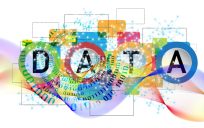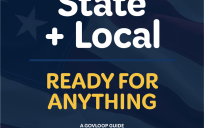
Many have already commented on how the Obama campaign took the leap into the Web 2.0 world in the same way that Kennedy beat Nixon by harnessing the power of the TV. … While many of the Obama strategies had been tried before, they really came of age this year. The questions for engaged citizens across the political and social spectrum is how the successes of the Obama campaign can be replicated. I would hazard that the campaign contains lessons for fundraisers, non-profits, political campaigns of all sizes, and private and public management teams (add your own in the comments!) for starters. … Instead of going to the well over and over again with larger donors throughout the campaign (a truly ineffective strategy in this age of campaign finance reform) or relying on outside groups to raise and spend huge sums that would have been outside the official campaign’s control, the Obama campaign continued to target new donors all the way to the last few weeks of the campaign. People could easily feel part of the campaign just by giving up a lunch out, and didn’t feel any financial exhaustion. This created financial buy-in from a huge universe of supporters instead of the normal cocktail circuit. Each of these supporters then had not only an interest or ideological stake, but a financial one in the outcome. Web tools allowed this. … The campaign also had social networks attached to its web site, allowing supporters to make friends, communicate, plan and set up their own events that could then be attended by other supporters. While the central message of the campaign was tightly controlled and focused (in Nevada, organizers told supporters not to say one bad word about the rival candidates and to act as if Obama were present every step of the way), which dazzled the media, it was also extremely loose at the ground level. Fundraising, phone banking and other events were open to all – even a single person at home with a long-distance connection. … Each volunteer had buy in, access to key information, and could work as much or as little as they wanted. And it worked, big time. … Web 2.0 enthusiasts now have a masterwork to follow as we think about how we can use these tools to organize, fundraise and change our own communities, and, as broadband access increases, the world. …




I work full-time, part-time, have two kids, am active in my local PTA and am going back to school. In spite of so much of my energy and time going every which way this was the first time I chose to work n a campaign. Why? Other than the obvious, because I was able to do it while working on my computer at home in my PJ’s w/my coffee and kids playing in the other room. Obama made it sooooo easy to really jump in and make a difference. I made calls with hardly any effort to swing vote states, and couldn’t be prouder of the outcome. I never would have had the time or energy to go walking door to door or go over to my local headquarters. He made it easy, and I took advantage.
Also, I mentioned that I am involved in the PTA. I am already looking to the Obama campaign for ideas in how to up date our fundraising tactics (which is falling short these days) and do a better job engaging the community in our efforts. I really think that everyone has something to take away from the amazing job that was done in this campaign. If he continues as President in the same way I’m sure there will be only positive things in the years to come.
I am similarly busy, but when you don’t even have to drive anywhere to get involved, how much better does it get! These ideas should also help push forward telework and other organizing without as much face-to-face contact. Please share if you have positive results changing the way your PTA works!
Imagine what the next 4 to 8 years could accomplish if Obama could use this approach to KEEP people so involved and engaged in their country! There are infinite possibilities. Infinite.
And I will certainly keep you informed of how these things help the PTA. It’s definitley a hard to time to be asking for money for PTA events, yet this is a time when the schools need all the extra money they can get. So the system is in need of a fresh approach.
Zach Exley had a great take on it back in october:
http://www.huffingtonpost.com/zack-exley/the-new-organizers-part-1_b_132782.html
Highlighting the good use of scalable organizational structures and attention to the cross over from web to real world action.
Adriel – great post. I think gov’t workers who get web 2.0 (all GovLoopers here) are anxiously awaiting to see how he will use these new tools to govern. Time will tell but it’s exciting.
Thanks for the link, Hugh. I read something really similar last month about the organizational structure and putting smart people to work in leadership roles. May have been by Exley on another site. That inability to plug people into the right roles really plagues some of the volunteer groups I work in – extremely talented people locked into roles they where they don’t do particularly well. I suspect my groups are not unique in that sense (as we can see from descriptions of past large-scale political campaigns).
I am reading “The Future of Work” on a recommendation from a GovLooper and hope that as I transition into gov management in the next few years I can bring along some of these ideas, trends and action items.
This is how we can change things…Technology is only good if it can be helpful to consumers…this was a great use of Web 2.0…I hope that this will inspire more people to get involved in their communities, in our country’s day to day business etc…It’s an amazing communication tool that bridges the gap between the haves and have nots…especially when we invest in the technological infrastructure of our public and university library systems etc…Free access to info…knowledge…news etc for those that normally don’t get a diverse view of what’s actually going on…I’m excited to see such innovation have a positive impact on so many people in such a profound way…
The editor of Government Technology magazine, Steve Towns, was recently at a government retreat where the chief correspondent for The New York Times said he thinks the Obama presidency may help boost budgets of state and local governments. This could bode well for continued IT innovation and Web 2.0 in particular. Without money, it’s hard to move forward.
As a local government employee and longtime political pragmatist, I was definitely looking at how the parties positioned on funding. I work for a well-funded and very professional department, but I see others working with antiquated equipment and even without e-mail! Thanks for the link.
It’s quite interesting to note the open honesty America has when it comes to talking about their political leaders. In New Zealand we have a far more restrained way of thinking as the Public Service is essentially independent of the political leaders of the day. This means that while we implement policy created by political parties, we have no judgement on the policy, but just to do it to the best of our abilities. If you’re a fan of bi-partisan public service, come over here:)
Could have something to do with the dominance of the two-party system and also how much our politics and religion are intertwined. Also the brute power of the executive office. I’m thinking New Zealand and the U.S. have very different political structures that lead to different levels of engagement in politics.